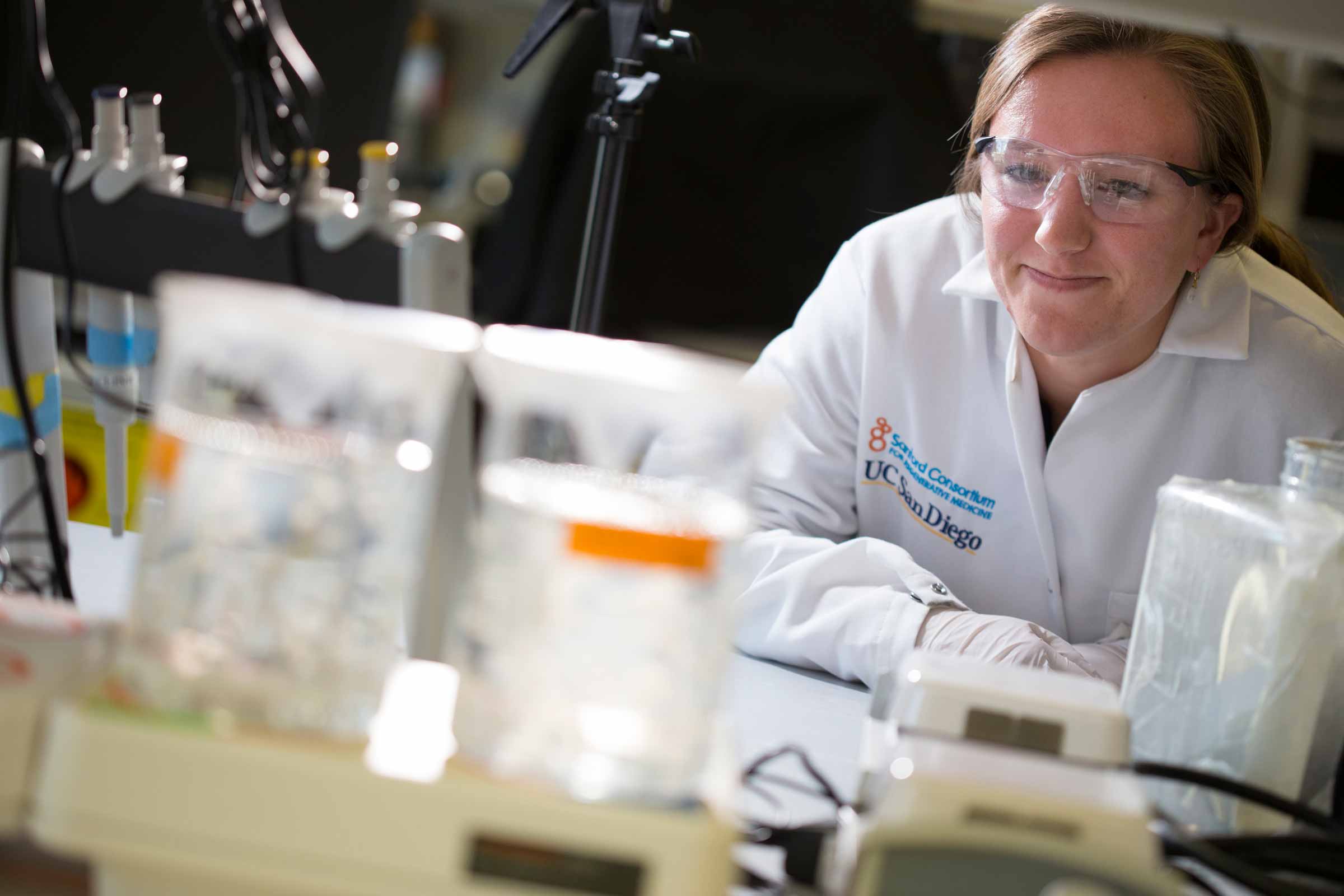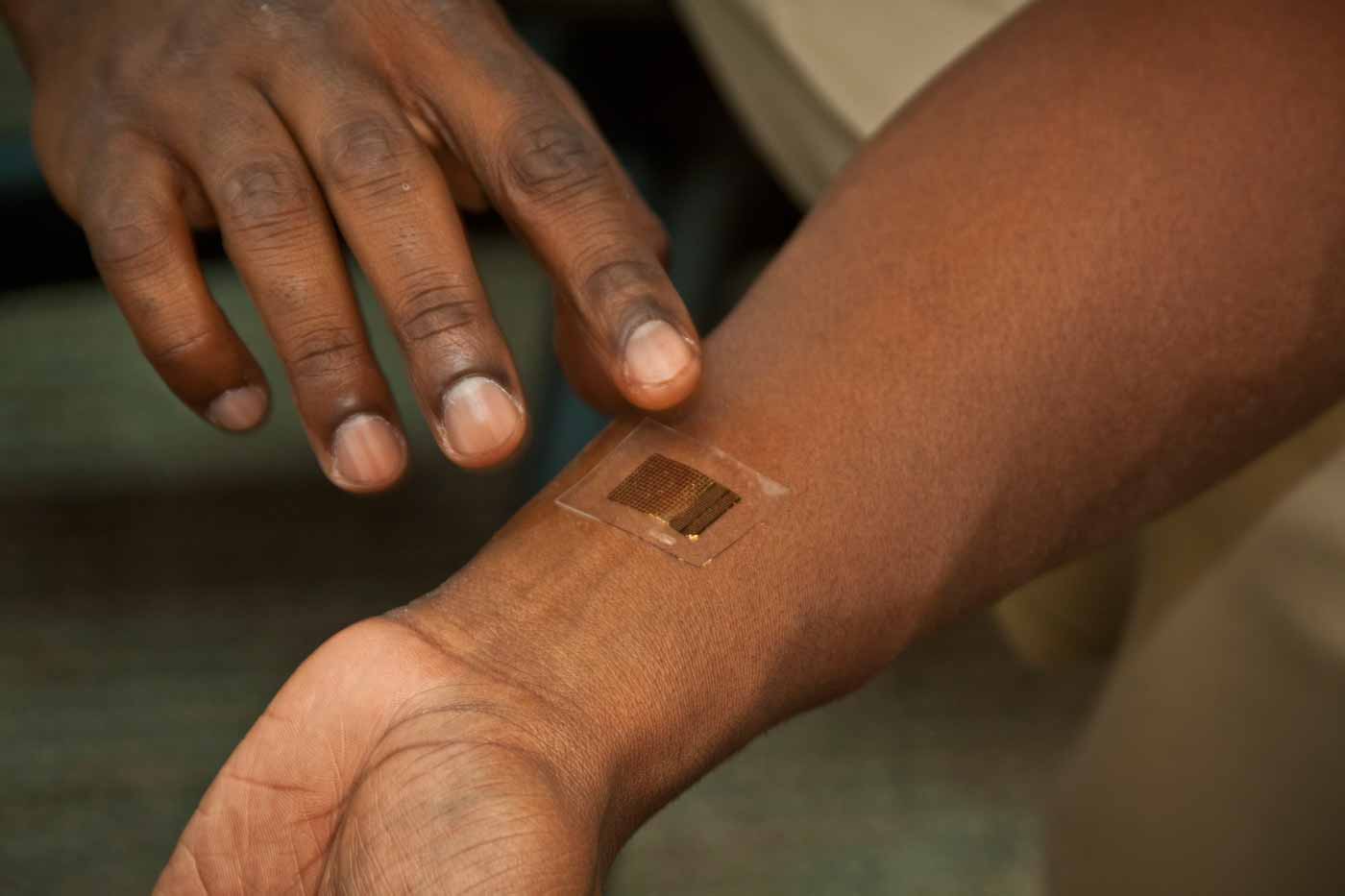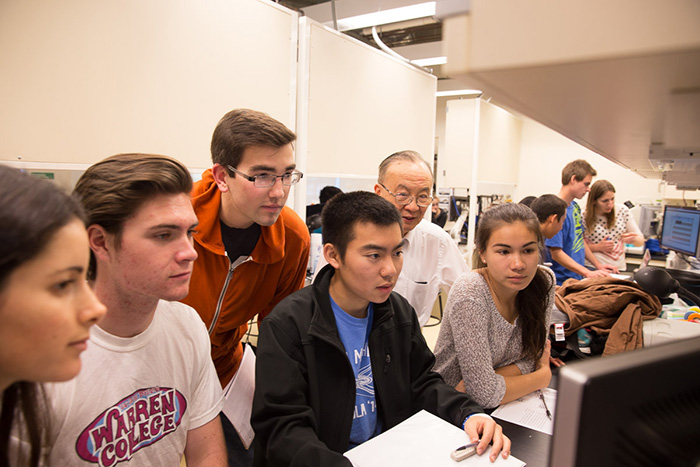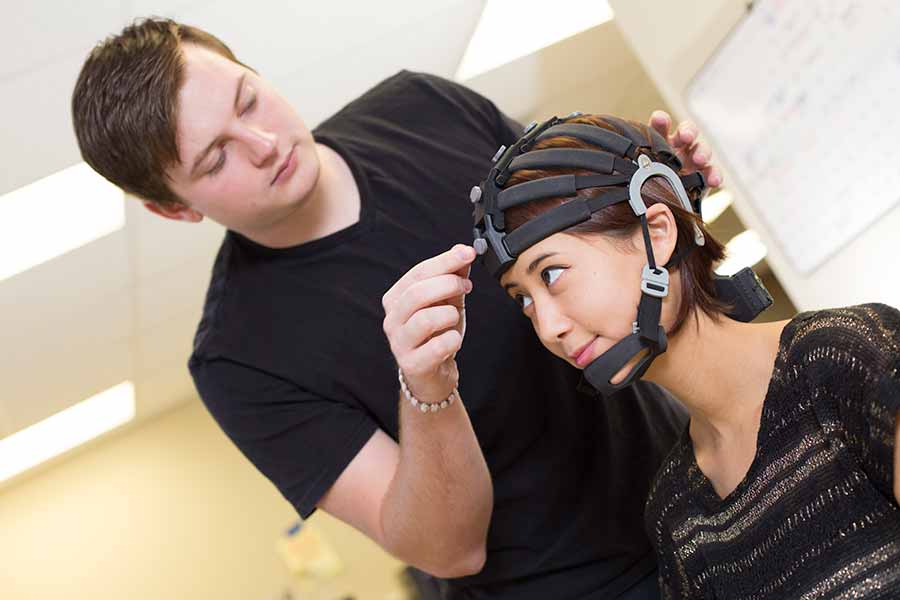
By:
- Ioana Patringenaru
Published Date
By:
- Ioana Patringenaru
Share This:
No. 1 From the Start
UC San Diego Bioengineering ranked first by National Research Council since founding 50 years ago

Ph.D. student Jessica Ungerleider looks at one of her experiments in the lab of bioengineering professor Karen Christman at the Sanford Consortium.
Bioengineers at UC San Diego have helped us understand why atherosclerosis develops and how it is impacted by blood flow. They have pioneered the development of very thin, small and flexible sensors that stick to the skin and monitor vital signs, such as the brain activity of a newborn. They also developed injectable hydrogels that can help muscle tissues heal after a heart attack.
Researchers celebrated their achievements over the past five decades and looked to the future during a three-day 50th anniversary celebration May 19 to 21.
“This department was created in the same spirit as our campus, as an innovative, collaborative and experimental place,” said Chancellor Pradeep K. Khosla during an anniversary gala at the Birch Aquarium. “We are proud that UC San Diego's Bioengineering Department has been a leader in the field since its founding, advancing our mission of education, research and service.”

Professor Todd Coleman shows off one of the multi-functional, flexible bio-electronic devices his team developed.
The bioengineering program at UC San Diego, which became a department in 1994, has maintained high national rankings throughout the years. Its graduate program has been consistently ranked No. 1 in the nation by the National Research Council. It serves as a model for many of the more than 130 existing programs in bioengineering and biomedical engineering worldwide, said Chair Geert Schmid-Schonbein. Its anniversary was recognized with a proclamation both from the County of San Diego and the City of San Diego, marking May 21 as Bioengineering Day.
“As we celebrate our 50th anniversary, we need to ask ourselves what we want to do better and what we can do differently,” Schmid-Schonbein said.
That is setting the bar high. The department is the coordinating entity for all bioengineering efforts within the University of California. Two faculty members have received the National Medal of Science—program founder YC Bert Fung, a legend in the field, and department founding chair Shu Chien.
A short history
Fung, then a professor at Caltech, with Marcos Intaglietta, also of Caltech, and Benjamin Zweifach, from New York University brought bioengineering to UC San Diego in 1966. Fung is now retired. He was a pioneer in analyzing the mechanical properties of tissues, including the lungs, blood vessels, heart, brain—and more. Intaglietta is still on faculty and pioneered the search for blood substitutes that may eventually replace human blood in transfusions. Zweifach passed away in 1997 after an illustrious career.
Since then, the program has graduated more than 6,000 students. “We’re constantly feeding new talent to industry, locally and nationally,” Chien said. “We teach a new generation of engineering students to work with living tissues, work in teams and apply innovative thinking, to serve them well in industry and academia.”

Professor Shu Chien helps students use sensors to measure muscle tension under different loads during a new hands-on pilot course for undergraduates in bioengineering.
As it grew, the program strengthened its ties to industry. In its early years, most Ph.D.s went on to join academia. Today, half go to work in industry. That percentage is even higher for undergraduates.
Three years ago, the department helped pioneer a design track that allows freshmen to take hands-on classes. All departments at the Jacobs School of Engineering have since adopted the approach. “Designing, building and testing are at the core of engineering,” Chien said.
Alumni entrepreneurs and leaders
Some of the department’s graduates have become entrepreneurs and are leading their own companies. Christophe Schilling is the CEO of Genomatica, a company that produces chemicals in a greener, more sustainable way. The company’s proprietary technology was licensed to chemical giant BASF and bioplastics leader Novamont. Iman Famili, one of Genomatica’s employees and an alumna, went on to co-found two more start-ups.
Other alumni have become leaders in their field. Ann Lee-Karlon is a vice president at biotech giant Genetech. Makoto Suematsu was appointed in 2015 by the Prime Minister of Japan as the founding director of the Japanese equivalent of the NIH. Dr. Brian Clary, who earned his bachelor’s in bioengineering here, is now surgeon in chief for the UC San Diego School of Medicine. Tom Skalak leads the science and technology programs at the Paul G. Allen Family Foundation, after serving as vice president at the University of Virginia.
A leader in research

Cognionics, founded by bioengineering alumnus Mike Yu Chi, has developed a wearable EEG headset that's comparable to state of the art laboratory equipment.
The department’s faculty are leaders in their research fields as well. They focus on analysis and design, said Schmid-Schonbein. That is, they analyze medical and biological problems and design a solution—just like a traditional structural engineer analyzes why a bridge collapsed—and then designs a solution—a stronger, better bridge.
A team of young rising stars that works at the cutting edge of bioengineering has been hired in recent years. Stephanie Fraley studies the physical and molecular mechanisms that drive complex cell behaviors in cancer and sepsis. Prashant Mali is an expert in the CRISPR/Cas9 gene editing technique that holds great promise for a wide range of therapies. Christian Metallo studies metabolism and its impact on disease such as obesity. Peter Yingxiao Wang is working with physicians at the School of Medicine to develop molecular biosensors and machineries to help treat multiple myeloma, a blood cancer.
Frontiers of bioengineering
In coming years, researchers envision a future where bioengineers bring together the very small and the very large into one comprehensive model of the human body. They will bring together molecules, cells, tissues and organs, he said. “We need to treat the whole person as an integrated system,” Chien said.
Bioengineers also probe the origins of aging and diseases that still challenge researchers, said Schmid Schonbein. “We look at the technologies used to support prevention, diagnosis and treatment,” Chien said. “We’re bringing everything together to improve people’s health and well-being.”
The department’s 24 faculty, junior and senior, boast a number of achievements in a wide range of fields, gravitating around genomics, regenerative medicine, diagnostic tools and treatment and prevention. Click here for research landmarks.
Share This:
You May Also Like
Stay in the Know
Keep up with all the latest from UC San Diego. Subscribe to the newsletter today.


